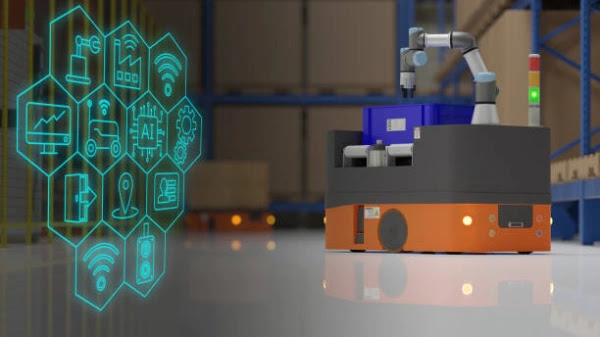Featured
- Get link
- X
- Other Apps
Internet of Things (IoT) and Interconnectivity
Revolutionizing the Digital Landscape
In our increasingly interconnected world, the Internet of
Things (IoT) stands as a pivotal technological revolution, promising to
transform how we live, work, and interact with our surroundings. At its core,
IoT refers to the network of interconnected devices embedded with sensors,
software, and other technologies, enabling them to collect and exchange data
autonomously. This interconnectivity transcends traditional boundaries,
spanning across industries, from healthcare and manufacturing to transportation
and smart homes. In this article, we delve into the profound implications of
IoT and its role in reshaping our digital landscape.
- Foundations
of IoT: At the heart of IoT lies the seamless integration of hardware,
software, and connectivity. Devices equipped with sensors gather data from
their environment, which is then processed and transmitted to other
devices or centralized systems for analysis and action. This data-driven
approach empowers businesses and individuals alike to make informed
decisions, optimize processes, and enhance overall efficiency.
- Interconnectivity
Driving Innovation: The true power of IoT lies in its ability to
foster interconnected ecosystems. By linking disparate devices and
systems, IoT enables synergies that were previously unattainable. For
instance, in smart cities, traffic lights can communicate with vehicles to
optimize traffic flow, while environmental sensors provide real-time data
to improve air quality monitoring. Similarly, in healthcare, wearable
devices can track patients' vital signs and transmit this information to
healthcare providers, enabling remote monitoring and timely interventions.
- Challenges
and Opportunities: Despite its immense potential, IoT also presents
challenges, particularly concerning security, privacy, and
interoperability. The proliferation of connected devices increases the
attack surface for cyber threats, necessitating robust security measures
to safeguard sensitive data and infrastructure. Moreover, the sheer
diversity of IoT devices and protocols complicates interoperability,
hindering seamless integration and data exchange.
However, these challenges also present opportunities for
innovation and collaboration. Industry stakeholders must work together to
establish standards and protocols that ensure interoperability and security
across IoT ecosystems. Additionally, advancements in technologies such as
blockchain offer potential solutions for enhancing data integrity and trust in
IoT networks.
- Applications
Across Industries: IoT's impact extends across various sectors,
revolutionizing operations, and unlocking new opportunities for growth. In
manufacturing, for instance, the adoption of Industrial IoT (IIoT)
facilitates predictive maintenance, asset tracking, and process optimization,
leading to reduced downtime and increased productivity. Similarly, in
agriculture, IoT-enabled sensors monitor soil moisture levels, weather
conditions, and crop health, empowering farmers to make data-driven
decisions and optimize yields.
Healthcare represents another domain ripe for IoT
innovation. Remote patient monitoring devices, smart medical implants, and
telehealth solutions are transforming healthcare delivery, enhancing patient
outcomes, and reducing costs. Furthermore, in retail, IoT technologies enable
personalized shopping experiences, inventory management, and supply chain
optimization, driving customer engagement and loyalty.
- Ethical
Considerations: As IoT continues to proliferate, it raises important
ethical considerations regarding data privacy, consent, and algorithmic
bias. The vast amounts of data generated by interconnected devices raise
concerns about unauthorized access and misuse, necessitating stringent
privacy regulations and data protection measures. Additionally, the algorithms
powering IoT systems must be transparent, accountable, and free from
biases that could perpetuate inequalities or discrimination.
- Future
Outlook: Looking ahead, the trajectory of IoT promises continued
innovation and disruption across industries. Emerging technologies such as
5G networks, edge computing, and artificial intelligence (AI) will further
enhance the capabilities of IoT, enabling faster data transmission,
decentralized processing, and more sophisticated analytics. Moreover, as
IoT becomes more pervasive, new use cases and business models will emerge,
reshaping markets and redefining customer experiences.
conclusion
The Internet of Things represents a paradigm shift in how we
perceive and interact with the world around us. By fostering interconnectivity
and data-driven insights, IoT has the potential to revolutionize industries,
drive innovation, and improve the quality of life for individuals worldwide.
However, realizing this potential requires addressing challenges related to
security, privacy, and interoperability while upholding ethical principles and
ensuring inclusivity. As we navigate this transformative journey, collaboration
among stakeholders will be paramount in harnessing the full benefits of IoT and
creating a more connected and sustainable future.
- Get link
- X
- Other Apps
%20and%20Interconnectivity.webp)

